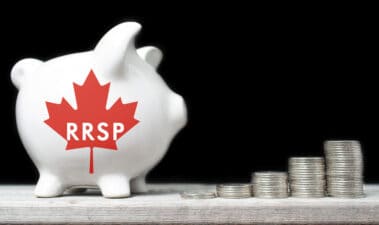Air Canada (TSX:AC) stock is rising again after falling 13.5% on the $5.9 billion bailout and a 10% equity dilution news. As I have highlighted in my previous articles, AC has won half the battle with the vaccine and the bailout. The thing with capital-intensive businesses is, they need working capital to survive. As long as they have money to run operations and meet their interest and debt obligation, they are fine. In a pandemic situation where the money was drying up, the airline needed to dig another well to prevent the draught of bankruptcy.
The bailout gave AC two years of money supply in the form of low-interest, long-term loans. While everyone is talking about the bailout terms, what’s next for the airline? Is Air Canada on a path to stable recovery, or does another roller coaster ride await it?
How the bailout altered Air Canada’s financial position
Last year, AC burnt $4.67 billion in cash — around $15 million cash daily. While it did take measures to slow this cash burn, it will take a year or two for cash burn to stop. The only way AC could fund this cash burn is by raising capital in every possible way. It even stopped giving leverage ratio and the weighted average cost of capital (WACC), as it raised $6.78 billion in financing.
But with $12 billion in long-term debt and a negative EBITDA of $2 billion, you can make a wild guess that AC is funding its losses at a 9% interest rate. According to Fitch’s estimates, there is an outstanding (RR1) recovery for AC’s senior secured debt and no recovery for unsecured debt. At such a time, a bailout loan for less than 2% interest comes as a breather. AC has access to $2.8 billion in unsecured loans, which it can withdraw as and when it needs.
How will recovery impact Air Canada’s financials?
Looking at the road ahead, AC has reduced its non-fuel operating expense by 37% and capacity by 85% from the 2019 levels. Fitch Ratings expects AC to operate at least at 50% capacity through 2021.
For airlines, the biggest expense is salaries (21% of revenue) and fuel (22% of revenue). The Canada Employment Wage Subsidy (CEWS) is shouldering 80% of AC’s salary-related expenses till June. If the government doesn’t extend the grant, AC will have to take up the entire salary expense. As borders reopen, the cost of fuel and salaries will rise. The airline is looking to reduce this expense by retiring old aircraft with more fuel-efficient aircraft that need low maintenance.
The next two years are very crucial for AC. By 2022, domestic air travel demand from leisure travellers will hopefully recover. However, international travel will take some time to show recovery.
In the international skies, the efforts of one airline are not sufficient. A traveller who wants to go to a particular destination will choose the cheapest airfare, be it Air Canada or American Airlines. As Warren Buffett has said, there are too many planes. But airlines worldwide have reduced supply by retiring planes. As demand recovers, airfare will once again become competitive.
The other half of the battle is yet to be fought
A steady recovery is only a far-fetched dream for AC until 80-85% of the global population is vaccinated. And once the stable recovery begins, the next challenge would be paying interest and debt. Does AC have the strength and resources to fight the other half of the battle? While it may look easy, as the planes are back in the skies and revenue is pouring in, the airline should have sufficient cash to pay off the debt.
In a battle, it is not about who is the strongest; it’s about who survives till the end. Instead of using up all resources, AC will use little every time to buy some more time. You will learn more about AC’s strategy of perseverance in its first-quarter earnings on May 7.
But AC is not a stock for you to show perseverance. It is a momentum stock whose rally could stabilize at $30-$31. There are better stocks than AC with stable recovery.




